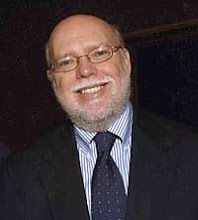Artists themselves are increasingly marketing their works directly to buyers in lieu of traditional gallery representation. Like almost every other facet of modern life, the internet has played a major role in this new landscape of art sales. I see more and more artists developing sophisticated and highly professional websites to present themselves and their work to collectors. Many also avail themselves of the multitude of social media outlets such as Facebook, Twitter, and Google+ to connect with a whole world of potential art buyers.
 |
| Sculptors Tim Cherry (2nd from left) and Rosetta are two artists who believe that an artist has to be active in several different kinds of sales venues to remain successful. |
At a recent auction in Dallas that featured both historic and contemporary western art, I noted that the audience was composed of collectors, artists, other auction professionals, and even a few gallery owners. Today, all of these many sales venues and opportunities seem to merge together and for both the beginning and veteran collector the many choices of where to see and buy art may seem somewhat overwhelming in the sheer number of choices.
One thing though remains constant in this brave new world of buying and selling American Western Art and that is the value of building personal relationships that can help guide any collector in making good choices when it comes to building a collection. I have worked in the field of western art for over three decades and to say the very least, I have seen many changes, from the proliferation of museum sales to the rise of direct marketing through the internet.
Throughout all of that time, I have had the benefit of many “guides,” so to speak---artists, gallery owners and representatives, curators and museum directors, and collectors themselves. The friendships that I have made over the course of some thirty-five years in the business have proven invaluable in my career and they have indeed guided me in making decisions regarding both my professional and personal collecting.
 |
| Tom Lovell took the time at the National Academy of Western Art to guide me through his strategy for pricing art. |
 |
| Artist Wilson Hurley, one of many artists who was generous with his time and expertise. |
Other artists, such as Bob Pummill, Wilson Hurley, Dave McGary, and Sandy Scott (to name just a very few) have generously taken the time to share with me their thoughts on the creative process and the business of making art. Wilson Hurley, in particular, guided me through on numerous occasions the many ways in which an artist must train himself to truly see the natural world around him. Knowing a little bit about how an artist looks at the world helps a collector or student of art appreciate even more any painting or sculpture. One can read what an artist thinks or how she or he approaches a subject, but hearing those observations directly from an artist is really invaluable.
I also owe a debt to such knowledgeable dealers as Michael Frost of Bartfield Galleries and Jack Morris of Morris/Whiteside Galleries, who always had the time to spend a few moments with me talking about art and artists. Other museum directors such as my first boss in the museum world, Mitch Wilder at the Amon Carter Museum in Fort Worth, and Fred Myers at the Gilcrease in Tulsa, took me under their respective wings and taught me much about both the museum and art worlds. My point is not to simply enumerate all of the people that I have met over the years, but to emphasize that it has been these personal relationships that have guided the many phases of my western art career.
Those sorts of relationships are not exclusive to museum professionals, they are available to every collector. There are people in every facet of the western art world from galleries to auctions who like nothing better than to talk about art with collectors (well perhaps they like selling art equally as much, but usually the talking leads to the sales).
My advice to collectors of all experience levels is to make the effort to meet these people, to make personal connections in the galleries and auction houses, at the museum shows, and of course, with the artists themselves. Collector Bob Rockwell once told me that one of the things that he liked most about collecting western art was that collecting gave him the chance to meet a whole world of interesting, friendly and generous people. I could not agree more.
To be certain, it is the art that brings all of these people together and it is an interest and passion in the Art of the American West that provides the connective tissue for these relationships, but in the end after the last lot has been sold and the lights have been turned off at the museum, it is the friendships that last, and it is those personal moments that persist.
On that evening in Oklahoma City when Tom Lovell guided me through his thoughts on how to price art, he also walked me over to a larger than life-size reproduction of Remington’s “Coming Through the Rye,” and proceeded to carefully analyze the statue’s flaws. He did so from the perspective of an accomplished artist, not to be critical of the foundry that produced the piece, but to be informative on how it could be improved. It was a great lesson for me and it has informed much of the way that I look at bronzes today. Lessons of that sort are waiting for every collector who attends an auction, goes to a museum sale, or wanders into a gallery---it all begins with a simple conversation.




